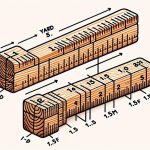As I ponder the question of how much money 2 yards of fabric might cost, it becomes apparent that the intricacies of fabric pricing are more than meets the eye.
The initial price per yard is just the beginning; factors like fabric type, quality, and brand all play a role in determining the total cost.
But fret not, for there are ways to navigate this fabric maze and perhaps even snag a deal.
Let's unravel the mystery together and uncover the secrets to smart fabric shopping.
Table of Contents
Key Takeaways
- Fabric quality and type significantly impact the cost of 2 yards of fabric.
- Consider seasonal trends for potential price fluctuations when purchasing fabric.
- Additional costs like shipping and customization can affect the total expenses of 2 yards of fabric.
- To save money, watch for fabric sales, use coupon codes, buy in bulk, and take advantage of loyalty programs.
Factors Affecting Fabric Pricing
When determining fabric pricing, various factors come into play, influencing the final cost of 2 yards of fabric. Initially, fabric quality plays a significant role in pricing. Higher quality fabrics, like silk or cashmere, are more expensive due to the cost of production and the luxurious feel they offer. On the other hand, synthetic fabrics are generally more affordable because they're easier to produce and have lower material costs.
Another factor that affects fabric pricing is seasonal trends. Just like in the fashion industry where designs change with the seasons, fabric trends also fluctuate. Fabrics that are on-trend and in high demand during a particular season will be priced higher due to their popularity. For example, lightweight and breathable fabrics may be more expensive during the summer months when they're in high demand for making comfortable clothing.
Understanding these factors is important in determining the cost of 2 yards of fabric and making informed decisions based on fabric quality and seasonal trends.
Average Cost of Fabric per Yard
The average cost of fabric per yard varies depending on factors such as material quality, production methods, and current market demand. When considering fabric quality, prices can range from budget-friendly options like polyester blends to luxurious silk or organic cotton, which tend to be more expensive. Production methods also play a significant role; handmade fabrics or those created using traditional techniques may cost more due to the craftsmanship involved. Additionally, current market demand influences pricing – fabrics that are on-trend or in high demand may come with a higher price tag.
For those looking to purchase fabric affordably, online shopping can be a great option. Many online retailers offer a wide range of fabrics at competitive prices, allowing you to compare costs easily and find the best deals. Also, online platforms often have sales, discounts, and bulk buying options that can further reduce the average cost per yard, making it a convenient and cost-effective choice for fabric shopping.
Total Cost for 2 Yards
Considering the average cost per yard, purchasing 2 yards of fabric can give a clear idea of the total cost involved. When comparing costs, it's important to factor in the quality of the fabric as higher-quality materials often come at a premium. Cost comparison is vital as prices can vary greatly depending on the type of fabric chosen. For instance, a luxurious silk fabric will likely cost more per yard compared to a basic cotton fabric.
To determine the total cost for 2 yards, multiply the cost per yard by 2. This simple calculation allows for an easy comparison between different fabric options. It's important to take into account both the cost and the quality of the fabric when making a purchase decision. Sometimes investing a bit more in higher-quality fabric can result in a better end product. When budgeting for a sewing project or any other fabric-related endeavor, understanding the total cost for 2 yards is a fundamental step in the planning process.
Additional Costs to Consider
As I explore the costs of purchasing 2 yards of fabric, it's important to also factor in any additional expenses that may arise. Shipping fees can have a big impact on the total amount spent. When ordering fabric online or from a distant store, shipping costs vary based on the seller's location, shipping method chosen, and the weight of the fabric. These fees can sometimes add up quickly, especially if expedited shipping is required.
In addition, customization options may come with extra costs. If you're looking to personalize the fabric by dyeing it, adding patterns, or making alterations, these customization services often come at an additional price. Some stores offer these services in-house, while others may require you to seek external vendors, which can increase the overall expenses.
Tips for Saving Money on Fabric
To save money on fabric, I often scout for discounts at local craft stores or browse online for sales and clearance items. Here are some tips that can help you save money on your fabric purchases:
- Fabric sales: Keep an eye out for fabric sales at your local stores or online retailers. Many shops offer discounts on fabric periodically, so it's worth checking regularly.
- Coupon codes: Before making any fabric purchases online, search for coupon codes that you can apply at checkout for additional savings.
- Bulk discounts: Consider buying fabric in bulk if you need a larger quantity. Many stores offer discounts when you purchase a certain amount of fabric.
- Join loyalty programs: Some fabric stores have loyalty programs that offer exclusive discounts and rewards to members. Signing up for these programs can help you save money in the long run.
- Sign up for newsletters: Subscribe to newsletters from your favorite fabric stores to stay informed about upcoming sales, promotions, and exclusive offers. This way, you can snag great deals when they're available.
Frequently Asked Questions
Can Fabric Prices Vary Depending on the Type of Fabric, Such as Cotton, Silk, or Polyester?
Fabric prices can vary based on the type like cotton, silk, or polyester. Each material has different durability and texture, influencing the cost. Understanding these differences helps in choosing the right fabric for specific needs and budgets.
Are There Any Discounts or Sales That Customers Can Take Advantage of When Purchasing Fabric?
Discount options and sale events at fabric stores provide great savings. By keeping an eye out for promotions, I can purchase high-quality fabric at a lower cost, allowing me to enjoy my sewing projects even more.
How Does the Quality of the Fabric Affect Its Pricing?
Fabric composition greatly influences pricing. Higher quality materials command higher prices due to increased production costs. Market demand also plays a role, impacting fabric prices. Understanding these factors helps in determining the value of different fabrics.
Are There Any Environmental or Ethical Considerations to Keep in Mind When Buying Fabric?
Considering the environmental impact is essential when buying fabric. Opting for eco-friendly materials and supporting fair trade initiatives can lessen harm. Being mindful of these factors guarantees a more sustainable and ethical approach to purchasing fabric.
What Are Some Common Mistakes to Avoid When Calculating the Total Cost of Fabric?
When considering fabric measurements, common mistakes include not factoring in shrinkage, overlooking pattern placement, and underestimating yardage needs. To account for these is crucial to guarantee an accurate total cost.
- The History and Evolution of Chamois Fabric - June 22, 2025
- Chamois Fabric on Wikipedia: What You Need to Know - June 22, 2025
- How to Pronounce Chamois Fabric Correctly - June 22, 2025







